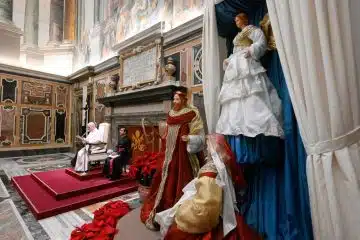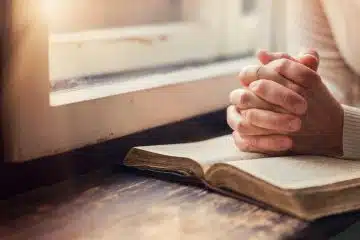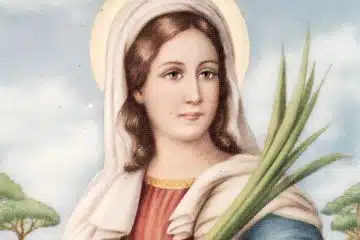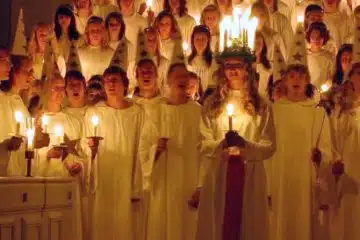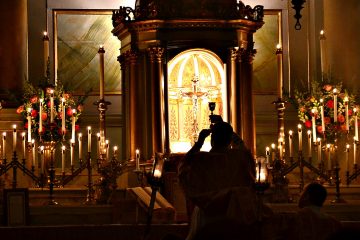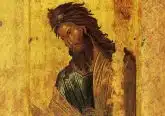Catholic Family Fuel: Take a good look at the church
January 10, 2012
By Ken Gleason
Have you taken a good look at the church lately?
This question is not so much about the theology of the Catholic Church as it is about the building where we worship God on Sundays and hopefully at other times. While the church building is a sacred space, it should not be thought of as so holy that you think the only place you can go is the same old pew Sunday after Sunday. It’s not a museum either, where everything is on display to be observed from a distance. So, how can you help your children become appropriately familiar with the church? Take a look!
It might be a hassle just to get your kids ready to go to Mass on Sunday, so you might want to think about visiting your parish church at another time. Some schools and parishes provide a tour of the church for students as part of their religious education. But, have you ever toured the church as a family? One option is to ask if someone from the parish staff can provide you with a tour, such as the pastor, the deacon, the DRE or another person. However, there is no reason that your family can’t tour the church on your own, although it is a good idea to talk with someone on the parish staff to let them know what you would like to do and when.
Where to start? There is no right place to start, but there are some places that you’ll want to include on your tour. How many times have you walked by the baptismal font without paying any attention to it? Perhaps your parish has a baptismal font near the entrance and your parishioners use it to bless themselves on the way into the church. Stop by the baptismal font. Let the kids dunk their hand in the water. Ask them if they know why we make the Sign of the Cross with the water in the baptismal font. It is meant to remind us of our own baptism in the name of the Father, Son and Holy Spirit. Tell the children who was present at their baptisms and what stories or details you can remember from that day.
Of course, you will want to take a look at the sanctuary, where the altar and the ambo (pulpit) and are. Obviously, these are central places for the celebration of the Mass. But, if your child is not an altar server or does not lector at school Masses, he or she may never see the sanctuary except from a distance. A visit to the sanctuary will provide you with an opportunity to talk about many things, such as why you go to Mass, special memories of going to church as a child, your own first Communion, a favorite Scripture story and so on.
Is the tabernacle (the place where the Eucharist is kept) in the sanctuary? If so, this will be a very good opportunity to teach your children about being reverent in a special way, by being quiet, genuflecting and saying a simple prayer, such as “My Lord and My God,” which reminds us of the real presence of Jesus Christ in the Eucharist. If the tabernacle is located in a chapel in your parish, be sure to make a visit and spend some time in prayer before the Eucharist.
Stained glass windows are a significant part of many parish churches. Though the creation and use of stained glass predates its use in churches, it really took off during the 13th and 14th centuries during the building of cathedrals and churches in Europe. Most people were unable to read and stained glass was a way of celebrating the faith and providing religious education for an illiterate population. What is the meaning of the stained glass in your parish church? You might have to do a little investigation, but it can be a good way to find out about your parish’s history or learn some central truths of our faith. Also, there are many great examples of stained glass from around the world on the Internet, a good place to do some homework after your tour of the church.
Another idea is to spend some time looking at the Stations of the Cross. It is a good idea to pray the stations either together as a family or at a parish prayer service. Even if you and your children have prayed the stations before, has your family ever actually looked carefully at the stations? The real objective of the stations is to help those praying them to make a spiritual pilgrimage to the chief scenes of Jesus Christ’s suffering and death. The stations are meant to help us visualize what happened. Such a visit to the stations can provide you with an opportunity to talk about Christ’s sacrifice and what it means for us and our salvation.
There are a number of other places you might include on your tour as well. What about the statues in your church? Who are they statues of? Why are they included in your church? It is also worth a visit to the sacristy where the priest puts on his vestments and where a number of sacred vessels are stored, though you will need to have a parish staff person or sacristan show you around. Are the sacred oils on display at your parish? It would be a good time to look at them and talk about when they are used and why. Admittedly, you may have to do some research to know what they are used for, or maybe your children will know from their own religious education. But, it will also remind you of a time when you or another family experienced confirmation or the anointing of the sick, once again providing an opportunity to talk with your children about your experience of the sacraments.
It’s your parish. Take a good look!
Gleason is the director of the archdiocesan Office of Evangelization and Catechesis.



